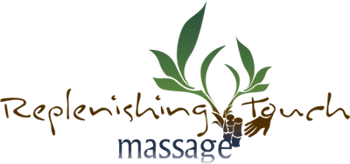
Call 484.441.1456 for an appointment
For Your Awareness on Cupping
Cupping is in some ways the opposite of massage: while massage is a compressive technique, performed by applying pressure, cupping instead uses negative pressure to pull, lift, open, & expand the body's soft tissues. Physiologically, the benefits of massage and cupping are similar, resulting from increased circulation of blood and lymph. The benefits of cupping are as impressive and inspiring as those of traditional compressive massage which are listed on our Benefits page. In our experience, cupping can succeed in producing lasting results where other techniques haven't, especially with chronic conditions. Because it is not a compressive technique, cupping can safely be performed directly over the spine and various other bones. This opens more therapeutic options than traditional massage in certain areas of the body. Just as with any other massage or bodywork treatment, the client's health concerns and history along with health updates over time are very important to discuss with the practitioner to assure a safe and beneficial treatment can be administered.The exact historical origins of cupping are unclear, but there is evidence of a long-standing use of the technique in Greece, Egypt, China, Africa and Europe. You'll see a set of cups pictured in Egyptian heiroglyphics whenever medicine or surgical procedures are mentioned. Napoleon Bonaparte and George Washington are among some famous historical figures on whom cupping was used for healing and wellness. Acupuncturists employ cupping in their work (most often without puncturing the skin) and peer reviewed scientific research suggests that cupping certainly does stimulate the acupoints in a similar fashion to acupuncture needles. We do not use any equipment or techniques that break the skin and our modern, hygienic, specially designed equipment assures client comfort and maximal therapeutic results.
It's important to know and understand a bit about the marks or discolorations that can sometimes result from a cupping treatment. Once understood and the many positive results of cupping are experienced, any inital concerns about cupping discolorations disappear.
 Cupping marks are merely temporary discolorations that do not produce any tenderness or pain - in fact,
after cupping clients usually report lasting changes for the better (especially with cumulative treatments).
While cupping discolorations can be a bit similar in appearance to bruising, the physiological origins in discolorations from cupping and bruises are very distinct. Bruises are usually the result of trauma from impact which breaks blood vessels and
allows blood to seep into the surrounding tissue. In contrast, cupping involves the application of suction, and when properly performed does not break any blood vessels or damage the tissues treated.
Cupping marks are merely temporary discolorations that do not produce any tenderness or pain - in fact,
after cupping clients usually report lasting changes for the better (especially with cumulative treatments).
While cupping discolorations can be a bit similar in appearance to bruising, the physiological origins in discolorations from cupping and bruises are very distinct. Bruises are usually the result of trauma from impact which breaks blood vessels and
allows blood to seep into the surrounding tissue. In contrast, cupping involves the application of suction, and when properly performed does not break any blood vessels or damage the tissues treated.
Cupping discolorations are most likely to occur, and tend to be most vivid when the cupping instruments are left stationary in a given spot from one to several minutes. The more moderate action of massage cupping (where the cups are applied with negative pressure and then moved along the skin's surface) tends to produce less vivid discolorations, if any. Such discolorations are temporary, typically ranging in color from light pink to dark purple and can last anywhere between a few hours to ten days before gradually fading away entirely. Again, no pain or tenderness is typically felt following a cupping treatment, whether or not discolorations appear on the skin.
Traditional Chinese Medicne learnings indicate that the marks result from dredging stagnation from within bodily tissues up closer to the surface of the skin, also helping to restore flow of energy and blood to the areas treated. This stagnation can include dead blood cells, old lymph fluid, and toxins that the body has not been able to eliminate via its circulatory system.
After a cupping treatment, clients typically report feelings of relief, muscular release, lightness, pleasant tingling, freedom from pain and an increase in flexibility and muscular control.
A few specific conditions that cupping can improve include anxiety, asthma, carpal tunnel syndrome, muscle spasm and muscle pain in general, constipation and digestive/elimination disorders, varicose veins, cellulite, neck pain, shoulder pain, back pain, and wrinkles/sagging skin on the face (please see our our Awareness-Spa page for further details on an Age-Defying Facial Cupping Treatment we offer).